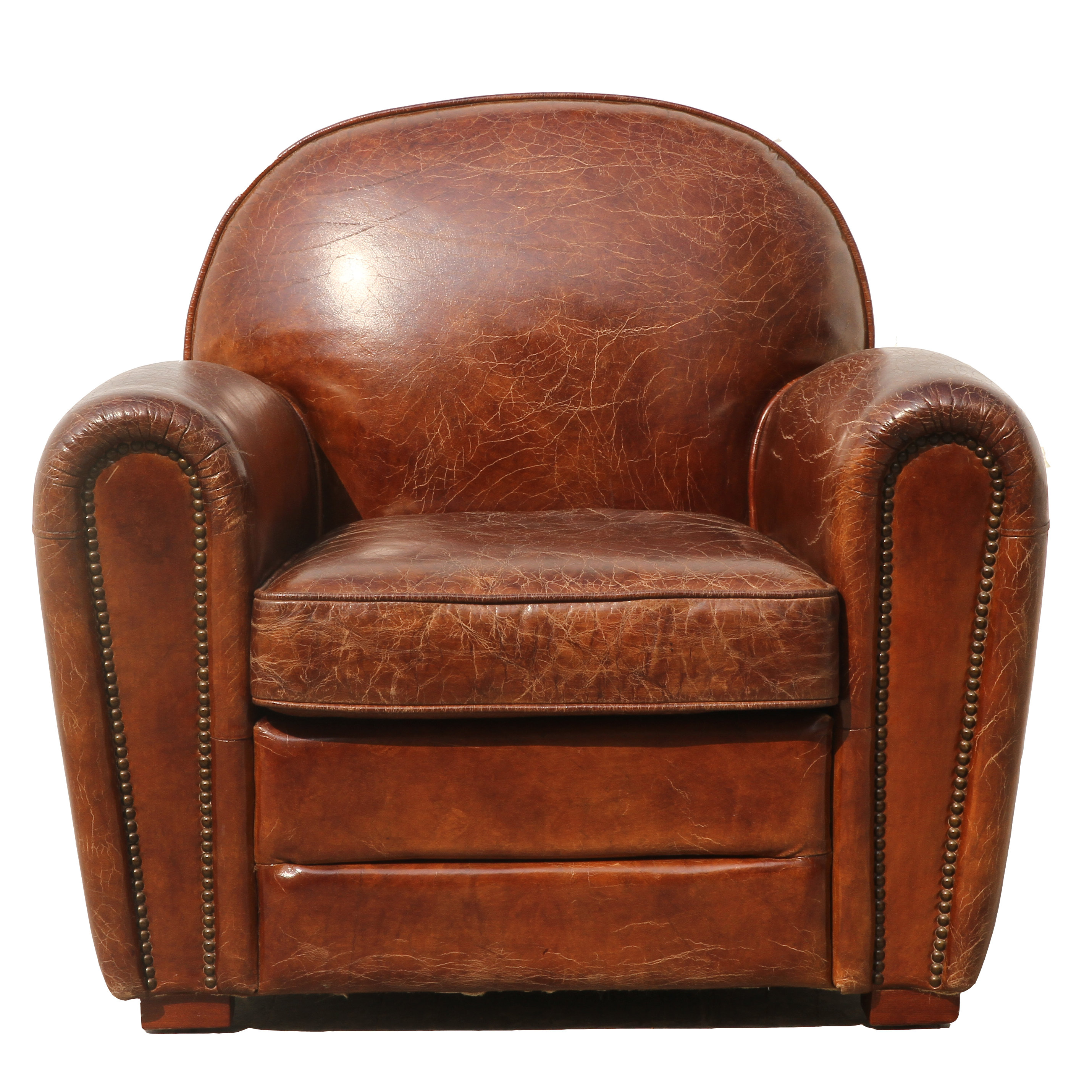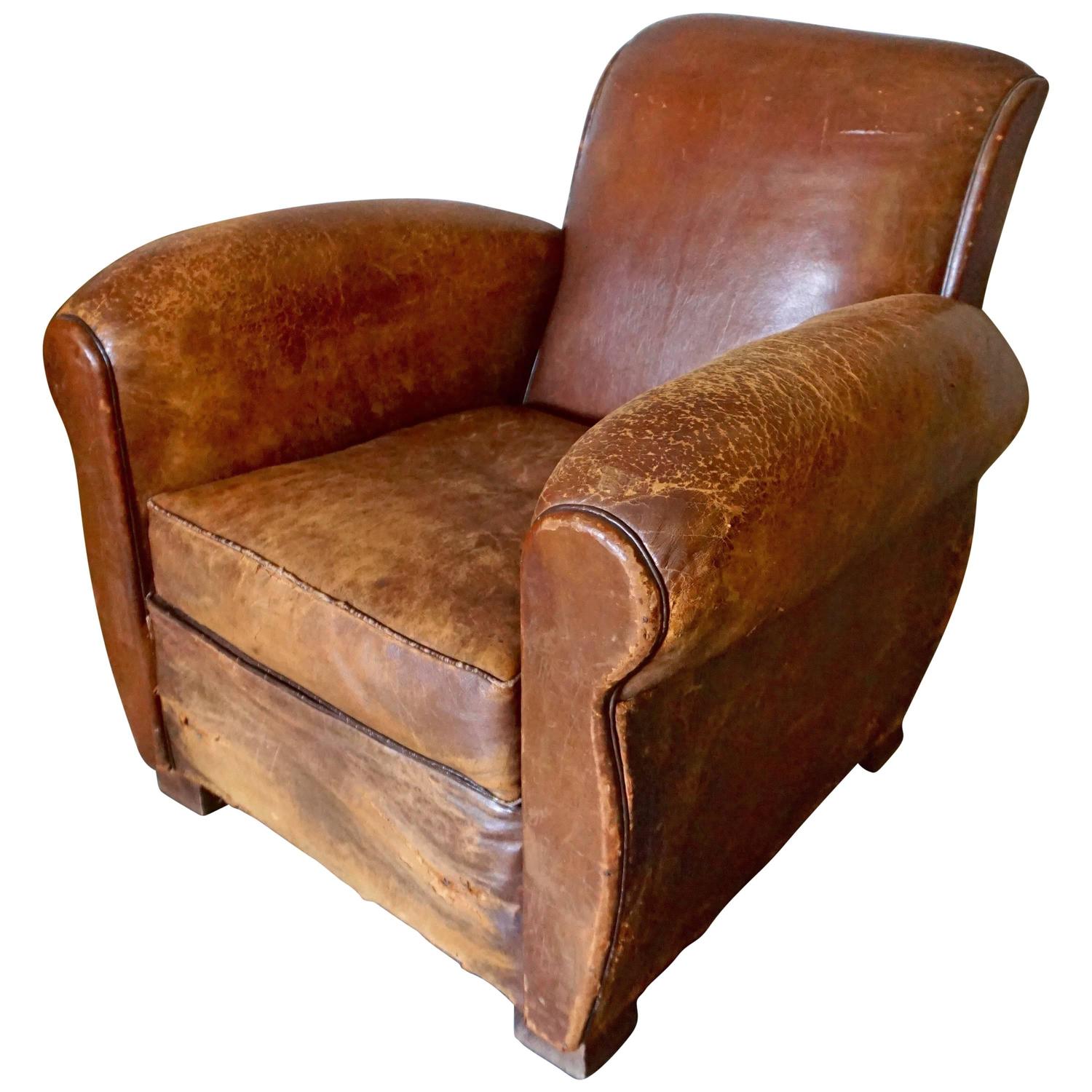History and Origin

The French leather club chair, a symbol of elegance and comfort, has a rich history intertwined with the evolution of furniture design and the craftsmanship of French artisans. Its origins can be traced back to the 17th century, during the reign of Louis XIV, when luxurious furniture became a hallmark of French aristocracy.
The Rise of Leather in French Furniture
Leather’s prominence in French furniture making stems from its durability, versatility, and aesthetic appeal. The availability of high-quality leather from local tanneries and the skill of French artisans in leatherworking contributed to its widespread use. During the 18th century, the Rococo period, leather upholstery became increasingly elaborate, featuring intricate carvings, gilded accents, and opulent fabrics. This era witnessed the emergence of iconic leather club chairs, often adorned with plush velvet cushions and intricate details, embodying the opulence and refinement of the French aristocracy.
Design and Craftsmanship

French leather club chairs are renowned for their exquisite design and meticulous craftsmanship. They embody the rich history of French furniture making, combining elegance, comfort, and durability.
Key Design Elements, French leather club chair
The design of a French leather club chair is characterized by its distinctive shape, size, and construction. These elements contribute to its aesthetic appeal and functional purpose.
- Shape: French leather club chairs often feature a rounded, inviting shape with a high back and arms. The seat is typically deep and cushioned for maximum comfort. The overall design exudes a sense of opulence and refinement.
- Size: These chairs are generally large and substantial, providing ample seating space for one person. Their dimensions allow for a comfortable and relaxed posture, making them ideal for reading, conversation, or simply enjoying a quiet moment.
- Construction: French leather club chairs are meticulously constructed using traditional techniques. The frame is typically made of hardwood, such as oak or walnut, and is carefully joined using mortise-and-tenon joints for exceptional strength and durability. The upholstery is typically made of high-quality leather, often hand-stitched to create intricate patterns and details.
Leather Quality and Craftsmanship
The leather used in French leather club chairs is a crucial aspect of their quality and appeal. The leather is carefully selected for its durability, softness, and natural beauty.
- Leather Quality: French leather club chairs often use full-grain leather, which is the highest quality of leather. Full-grain leather is the outermost layer of the hide and retains its natural grain, making it durable, breathable, and resistant to scratches and tears. Over time, full-grain leather develops a beautiful patina, adding to its character and charm.
- Craftsmanship: The craftsmanship involved in creating French leather club chairs is meticulous and time-consuming. Skilled artisans use traditional techniques to hand-stitch the leather upholstery, ensuring a high level of precision and detail. The stitching patterns can range from simple to elaborate, adding a touch of elegance and sophistication to the chairs.
Styles of French Leather Club Chairs
French leather club chairs come in a variety of styles, each with its own unique characteristics. Some of the most popular styles include:
- Chesterfield: The Chesterfield is a classic style characterized by its deep buttoned back and arms, and rolled top. It is often upholstered in dark leather and has a masculine and sophisticated look.
- Bergère: The Bergère is a more feminine style with a high, curved back and arms, and a skirt-like base. It is often upholstered in lighter leather and features intricate carvings and embellishments.
- Directoire: The Directoire style is characterized by its straight lines and simple design. It is often upholstered in plain leather and has a more minimalist and contemporary look.
Materials and Finishes: French Leather Club Chair

The artistry of French leather club chairs extends beyond their elegant designs to the quality of materials and the meticulous finishing techniques employed. The choice of leather, wood, and metal, along with the methods used to treat and embellish them, contributes significantly to the chair’s enduring appeal and luxurious feel.
Leather Selection and Characteristics
The type of leather used in French club chairs is crucial to their comfort, durability, and aesthetic appeal. Full-grain leather is often preferred for its natural beauty, strength, and ability to age gracefully. This type of leather retains its original grain pattern, making each chair unique.
- Full-grain leather is the most durable and luxurious type of leather, characterized by its natural grain pattern and the presence of the top layer of the hide. It is known for its strength, breathability, and ability to develop a beautiful patina over time.
- Top-grain leather is a slightly less expensive option that is still considered high-quality. It is produced by removing the top layer of the hide, resulting in a smoother surface.
- Aniline leather is a type of full-grain leather that is dyed with a transparent dye, allowing the natural grain pattern to show through. This creates a soft, supple leather that is highly breathable.
- Semi-aniline leather is similar to aniline leather but is treated with a protective coating that enhances its durability and resistance to stains.
- Nubuck leather is a type of full-grain leather that is sanded to create a soft, velvety surface. It is often used for upholstery because of its luxurious feel and unique appearance.
Leather Finishing Techniques
French leather club chairs often feature intricate finishing techniques that enhance their visual appeal and add to their luxurious character. These techniques include dyeing, embossing, and distressing.
- Dyeing is a process that involves applying color to the leather to achieve a desired shade. Natural dyes, such as those derived from plants and minerals, are often used for their rich colors and ability to create unique effects.
- Embossing is a technique that uses a heated metal die to create patterns or designs on the leather surface. This technique can add texture, depth, and visual interest to the chair’s upholstery.
- Distressing is a process that involves artificially aging the leather to create a vintage or antique look. This can be achieved through techniques such as sanding, rubbing, or using chemicals to create a weathered appearance.
Role of Wood and Metal
Wood and metal play vital roles in the construction and design of French leather club chairs. They provide structural support, contribute to the chair’s overall aesthetic, and often serve as decorative elements.
- Wood is commonly used for the frame, legs, and arms of the chair. Hardwoods such as oak, walnut, and mahogany are favored for their strength, durability, and attractive grain patterns. These woods are often stained or lacquered to enhance their natural beauty.
- Metal is often used for accents such as studs, nailheads, and hardware. Brass, bronze, and iron are common metals used in French club chairs. They add a touch of elegance and sophistication to the design.
Let’s be honest, a French leather club chair screams “sophisticated” but it’s not exactly built for a bustling restaurant. For that, you need something more durable and stackable, like the flash furniture rattan indoor outdoor restaurant stack chair.
They’re like the leather club chair’s rugged, outdoorsy cousin, ready to handle anything from spilled wine to a rogue plate of fries.
Okay, so you’re thinking fancy French leather club chair, all plush and sophisticated. But let’s be real, sometimes you just want to kick back and relax in the sun, right? That’s where the Forzza Krabi folding outdoor recliner chair comes in.
It’s like the casual, comfy cousin of your fancy French leather chair, perfect for soaking up some rays and forgetting about the world. And who knows, maybe you’ll even inspire a new line of “French leather” patio furniture!